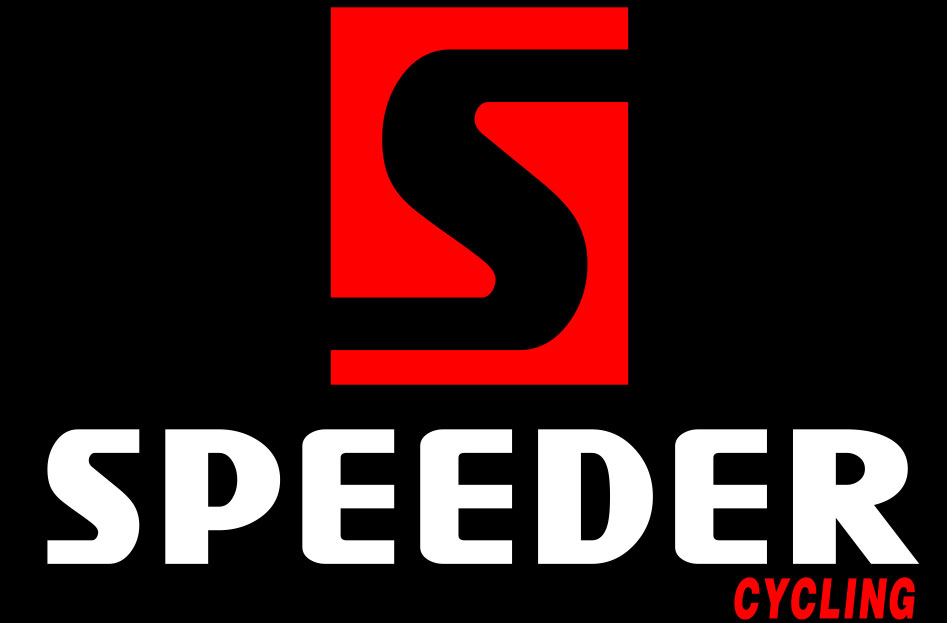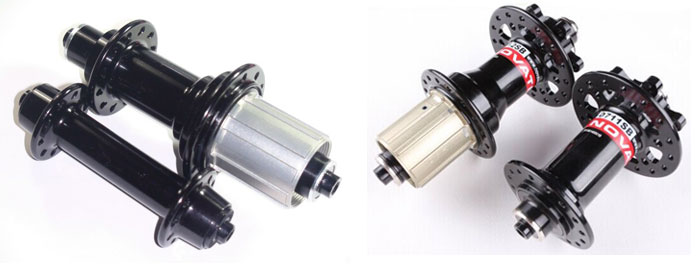Hub Selection |
28-Aug-2014 |
The hub is the central point of the wheel structure where all dynamic loads transfer from the tire-wheel system through the spokes into the bicycle frame. The hub handles tremendous static and dynamic loads created by the road, the rider and the tension of the spokes. The following guidelines aim to help you pick the best hub for your application.
Hub Weight
Of all the components on a wheel, the hub plays the smallest role on rotating inertia because it is located as close to the center of rotation as possible. This means that the weight of the hub is not as significant as the weight of other wheel components located further from the center of rotation (i.e., rim, nipples, tires, or tube). On bicycles with suspension, the weight of the hub contributes to unsprung mass -- these systems will always benefit from decreasing hub weight. On road bicycles, decreasing hub weight often affects ride quality and steering characteristics; however, these effects are usually small within a limited range of hub weights. Decreasing hub weight on a road bike will make your bike lighter, which can be an important factor for racing or climbing where every gram can help performance.
Hub Flange
The largest load on a hub is created by the tension of the spokes. Wheels that are laced with 2-, 3- or 4-cross spoke patterns create much less stress on a hub flange than those that are radially laced. This has to do with the extreme angle (or lack thereof) in which the spokes apply load to the flange. Radially laced spokes patterns can contribute to flange cracking and breakage. For this reason some hub manufacturers will not warranty hubs that have been radially laced. However, several manufacturers produce hubs with extra thick or forged flanges with holes drilled closer to the axle, leaving extra material to handle the additional stress of radial lacing. Other manufacturers design their hubs to for use with straight pull spokes, which apply loads differently to the hub flange. Examples of these hubs are seen on some Mavic and Zipp Wheels. Keep in mind that larger flange diameters usually contribute to higher lateral and torsional wheel stiffness. For these reasons, large flange hubs are popular with track racers. Lower flange hubs contribute to lower rotating inertia, which we discussed in the previous paragraph.
Other Hub Considerations
Before selecting your hub, you may want to consider compatibility with your rim. Some hubs are not available in very low or very high spoke counts. For example if you want to use a Zipp 188 hub with your 32-hole front Mavic wheel, you will discover that no such hub exists. Pay careful attention to the number of spokes you select on your hub and rim to make certain they match.
Another parameter to pay attention to is hub width. Most front hubs are 100mm wide with some exceptions for mountain bikes. Rear hubs can vary from 120mm to 160mm, however the most common sizes are 130mm for road and 135mm for mountain bikes. Make sure you select the hub that applies to your application. Selecting the wrong hub can create a real challenge after the wheel is built.
Other issues to consider are: color preference, manufacturer preference, durability in wet weather, ease of maintenance, availability of spare parts and (of course) cost.

